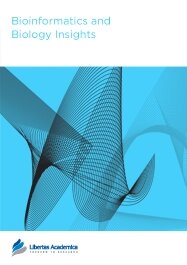

Publication Date: 23 Jan 2011
Type: Case report
Journal: Bioinformatics and Biology Insights
Citation: Bioinformatics and Biology Insights 2011:5 13-39
doi: 10.4137/BBI.S5537

Abstract: Large public repositories of microarray experiments offer an abundance of biological data. It is of interest to use and to combine the available material to create new biological information and to develop a broader view on biological phenomena.
Meta-analyses recombine similar information over a series of experiments to sketch scientific aspects which were not accessible by each of the single experiments. Meta-analysis of high-throughput experiments has to handle methodological as well as technical challenges. Methodological aspects concern the identification of homogeneous material which can be combined by appropriate statistical procedures. Technical challenges come from the data management of large amounts of high-dimensional data, long computation time, as well as the handling of the stored phenotype data.
This paper compares in a meta-analysis of a large series of microarray experiments the interaction structure within selected pathways between different tumour entities. The feasibility of such a study is explored and a technical as well as a statistical framework for its completion is presented. Multiple obstacles were met during completion of this project. They are mainly related to the quality of the available data and influence the biological interpretation of the results derived.
The sobering experience of our study asks for combined efforts to improve the data quality in public repositories of high-throughput data. The exploration of the available data in large meta-analyses is limited by incomplete documentation of essential aspects of experiments and studies, by technical deficiencies in the data stored, and by careless duplications of data.
PDF (816.45 KB PDF FORMAT)
RIS citation (ENDNOTE, REFERENCE MANAGER, PROCITE, REFWORKS)
BibTex citation (BIBDESK, LATEX)
XML
PMC HTML
Bioinformatics and Biology Insights fills a gap in current journals. Ever more often, bioinformatics and detailed analysis of data creates novel, unexpected insights. It is good to have a journal which focusses on exactly this aspect of bioinformatics research, putting the biology insights upfront with high respect for the different methods in bioinformatics.

All authors are surveyed after their articles are published. Authors are asked to rate their experience in a variety of areas, and their responses help us to monitor our performance. Presented here are their responses in some key areas. No 'poor' or 'very poor' responses were received; these are represented in the 'other' category.See Our Results
Copyright © 2013 Libertas Academica Ltd (except open access articles and accompanying metadata and supplementary files.)
Facebook Google+ Twitter
Pinterest Tumblr YouTube